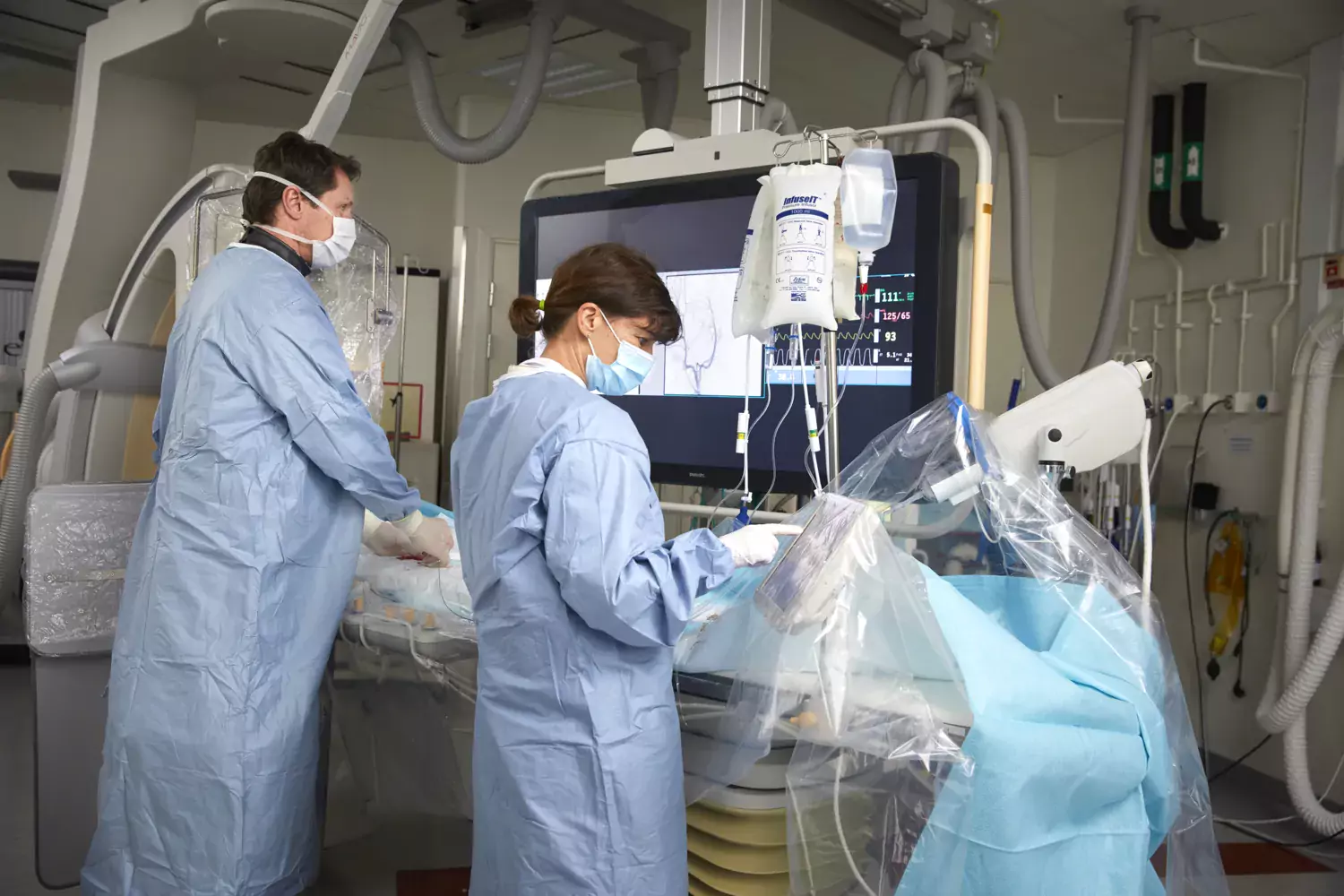On-site training (Verksamhetsförlagd träning)
On-site training is formerly known as clinical education, you may come across it as VFU (Verksamhetsförlagd träning) or VIL (Verksamhetsintegrerat lärande). One of the aims of the on-site training part of the programmes is for you as a student to be given an opportunity to develop a professional approach and identity, and to apply and integrate theoretical knowledge with practical skills.
Prior to each placement, the programme course coordinator informs students of the guidelines and goals of the on-site training component of their education.
On-site training assessment
On-site training components are assessed according to standard assessment criteria established by the programme committee. If you risk failing a clinical course/module, you will be informed of this in writing and orally in good time in order for you to improve your skills in accordance with a personalised action plan. Any agreements reached between you and your teachers are to be put in writing.
To receive a passing grade for on-site training, you must fulfill the intended learning outcomes stated in the course syllabus. Examination procedures varies and questions can be answered by the programme administration.
Attendance and interrupted on-site training
All on site-training is mandatory. Rules regarding absence can be found in the course syllabus. The examiner may cancel the on-site training if a student shows serious inadequacy in knowledge, skills or approach.
Extracts from the criminal records can be requested for on-site training placements that involve contact with children.
The EU directive on eleven hours of daily rest
The EU directive on eleven hours of daily rest from 2023 applies also to students doing practical placement, according to a statement made by Region Stockholm in the Education Advisory committee 2025-05-07 .
Process for on-site training placements
For participation in on-site training you will be registered in the administrative system for on-site training placements called Kliniskt PlaceringsProgram (KliPP) as well as in Stockholm County Council’s electronical catalogue (abbreviated EK). You will also be given a unique identification number (HSA-ID).
Information regarding the specific procedures that apply for your programme, as well as contact details of whom to turn to with questions, can be found on the programme website.
- Normally you first need to complete the on-line education JoBSH (see more information below) it takes about two hours
- Upon completion, send in the JoBSH certificate to your coordinator
- An access card/ e-tjänstekort can then be ordered for you
- You have to pick up your card at Stockholm County Council’s (Region Stockholm´s) card office, information on address and drop-in hours is available at the Region Stockholm's webb page for students(only in Swedish).
This must all be done before the first day of your on-site training so that you have your card ready the first day!
JoBSH education and eTjänstekort
All students participating in any form of on-site training for Stockholm County Council (Region Stockholm) must undergo the compulsory online education JoBSH (Journalhantering, Bemötande, Sekretess och Hygien) which covers handling of medical records, attitudes/treatment in healthcare, confidentiality and hygiene.
When you have passed the course, the "eTjänstekort" can be issued. The card is an access/ID-card needed for on-site training within the Stockholm county Council (Region Stockholm), different from the KI-access card, used for example for computer access and access to the facilities during your on-site training.
- The accesscard issued to students without a Swedish personal identity number (personnummer) is a temporary card without a photo, valid for six months (it can be prolonged if needed).
- If you are an exchange student to KI without a Swedish personal identity number, your international coordinator will give you all the relevant information on JoBSH and the application of eTjänstekort.
Make sure to have the e-tjänstekort ready for your first day on your on-site training!
Students with protected personal data should contact the study counsellor or equivalent regarding eTjänstekort.
Remember to check your KI student email account regularly to make sure you get all important information about on-site training!
Contact information for questions about your study situation
Program Director, Examiner, Study Advisor, see course web

